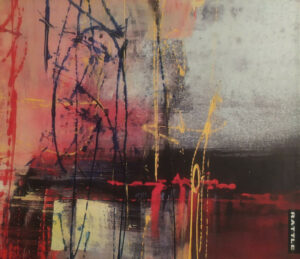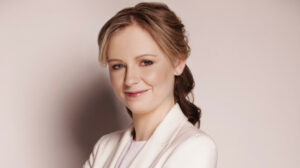Orchestra Wellington: Leviathan
Wagner Lohengrin Prelude to Act 1
Psathas Leviathan Concerto for percussion
Schumann Symphony No 2
Alexej Gerassimez (percussion)
Marc Taddei (conductor)
Orchestra Wellington
Michael Fowler Centre, Wellington
Saturday. 17th September, 2022
The whole concert took the title ‘Leviathan’, which was, frankly, misleading. Much more than half the concert came from the soundworld of nineteenth-century German romanticism. But still, ‘Leviathan’ was a better marketing pitch. And the concert was traditional in format: an overture, a concerto, and a symphony. But this being Marc Taddei’s programming, the effect was anything but traditional.
This concert, like all Orchestra Wellington concerts, began with an introduction to the works by conductor Marc Taddei. The OW audience obviously enjoys these little chats. The opening words concerned the 2023 season. It was, Taddei informed us with a dramatic flourish, to be called ‘Inner Visions’ (like the Van Morrison song?) and summed up by this quote from the painter Kandinsky: ‘That is beautiful which is produced by the inner vision, which springs from the soul.’ He went on to flatter the audience: ‘You complete this process of music-making. You are the interpreter of what you hear. We try to manifest the composers’ ideas, but you make it come alive.’
Onward to this evening’s concert. Music, Taddei helpfully explained, has two strands. One, which had its roots in the Enlightenment, saw music as Apollonian, idealized. But the other, since medieval times, gave rise to romanticism. And tonight’s concert was in the romantic tradition. ‘It consists of three unassailable masterpieces … with a work by our very own genius, John Psathas.’
The ‘overture’ consisted of the Prelude to Act 1 of Lohengrin, a most un-overture-like piece of music. When Wagner told his friends, including Schumann, that he planned to write an opera based on the Arthurian legend of one of the Grail knights, Schumann announced he had been thinking of writing an opera on the same theme. (For Arthurians, Lohengrin is the son of Parzifal in the medieval poem Parzifal by Wolfram von Eschenbach.) Naturally Wagner got there first. The introduction begins with the faintest shimmering of the high strings and gently builds, entry by entry, to a big portentous crescendo that culminates in an orgasmic crash on the clash cymbals, and a decrescendo back down to shimmering lyricism. The playing was beautiful, whether it was the strings’ endless delicacy or the tender solos from the winds (a gorgeous cor anglais solo, for instance, from Louise Cox). The work was written in 1848, but already it is possible to hear elements of Wagner’s mature leitmotif style.
John Psathas’s monumental percussion concerto was commissioned by the Tonhalle Dusseldorf and the soloist, a young German percussion virtuoso called Alexej Gerassimez. The artist’s appearance was supported by the German Embassy. The work is in four movements, and requires two large batteries de percussion, one at the back of the orchestra and the other at the front of the stage, as well as 4 horns, 4 trumpets, 3 trombones, and a tuba.
Alexej Gerassimez is a tall, lithe young man, very light on his feet – because at times he was required to run from one side of the stage to the other – and at one point two extra percussionists came downstage to play instruments on the left while he dealt with several simultaneously on the right-hand side.
The writing is characterized by Psathas’s fast, exciting rhythms and his cumulative, layered climaxes. Sometimes the orchestral writing was rather static, with all the momentum provided by the percussion instruments. The second movement referred to Beethoven’s Pastoral Symphony, with Psathas bringing the ‘background melody’, played ‘with love and compassion and warmth’ by the cellos and basses, into the foreground.
The enormous third movement was titled ‘Soon We’ll All Walk on Water’ and featured an amplified plastic bottle, played by scratching, shaking, and beating. The movement culminates with Gerassimez playing a bowl of water with his hands, and finally using a colander to pour water back into the bowl. Then followed another bottle solo with the strings playing mournful grey chords in the manner of Goretsky’s Symphony of Sorrowful Songs against the quite jolly bottle rhythm.
Likewise a Wagnerian passage on wind and brass formed a wash of colour behind a solo on what sounded like small stones being struck. Another crescendo is followed by a quiet, thoughtful clarinet solo (Nick Walshe).
The last movement, ‘A Falcon, a Storm, or a Great Song?’ (quoting Rilke) contained some of the loveliest marimba playing I have ever heard, along with steel drums, what sounded like a slit drum, woodblocks, a whip, tubular bells, bass drum, and timpani, all building to a final crescendo complete with snarling trumpets and a final single triangle note.
Leviathan is a most interesting work. It must have been challenging to bring off. Leaving the soloist to one side, there was still a vast amount of percussion being played by Jeremy Fitzsimons, Brent Stewart, Naoto Segawa, and Yoshiko Tsuruta, with Sam Rich on timpani, and a gazillion notes for the big brass section. The tempo changes must have been challenging. And that’s before the soloist is added, bringing a world of complexity and fast changes.
The audience loved it. There was rapturous applause, with Gerassimez shaking the hand of Concertmaster Amalia Hall and conductor, the composer arriving on stage to hug everyone, and several curtain calls.
After the interval, the symphony. Marc Taddei embarked on an introduction to the work that lasted about 20 minutes. Schumann’s Second Symphony was in fact the third one he wrote. It is ‘personal and deeply felt,’ said Taddei: ‘It is the most personal symphony written in the nineteenth century or indeed in any century.’ I’m not quite sure what this means, or whether it is even true, though I became quite distracted trying to think of candidates for more personal works. (Shostakovich, certainly. Tchaikovsky, definitely. Mahler!!)
Taddei rehearsed the sad facts of Schumann’s mental ill health before telling us about Mendelssohn’s rediscovery of Bach and the great Bach revival that Schumann and Mendelssohn embarked upon around this time. The second symphony, it turned out, was flavoured with Bach whilst containing many references to Schumann’s friends and his beloved wife Clara.
And then the musical examples – every movement was analysed, with the key themes played and musical references unravelled and displayed. It was interesting, and I am certain the audience thought it marvellous, but most of it is so intrinsically part of Schumann’s musical language that in the event it is mostly subliminal.
Finally, the symphony itself. Taddei was right. This is a masterpiece and it deserves to be performed often. If you are thinking of programming a Schubert symphony over the next year, please programme this instead. It was mostly very well played, though without the meticulous attention to detail and clarity that Gemma New would have provided. Taddei conducted without a score, and at one point in the second movement he stopped conducting altogether and turned to grin at the audience. Another favourite trick; the audience grinned back.
Although the Scherzo is fun, and the Allegro vivace creates a big pile-up of overlapping themes with ‘B-A-C-H’ ringing out at the end, the Adagio espressivo that follows is a glorious thing. It takes its theme from Bach’s Musical Offering ‘and turns it into a romantic song without words’. There were beautiful solos by Merran Cook (oboe) and Jamie Dodd (bassoon) and a horn duet (Shadley van Wyk and David Codd). The fourth movement is a bouncing delight, fast end energetic.
It was notable that there was applause after every movement – a spontaneous response to beautiful music. I would love to hear the work again. Indeed, if the concert had started and ended with it, omitting the Wagner, I would have been happy. But Taddei’s point was about the invention of the musical language of romanticism. Schumann wrote the symphony only two years before Lohengrin. And Psathas quoted liberally from that language whilst putting it to wholly novel purposes.
All in all, a very satisfying and absorbing concert. I am intrigued to see what Inner Visions Orchestra Wellington may bring us in 2023.



